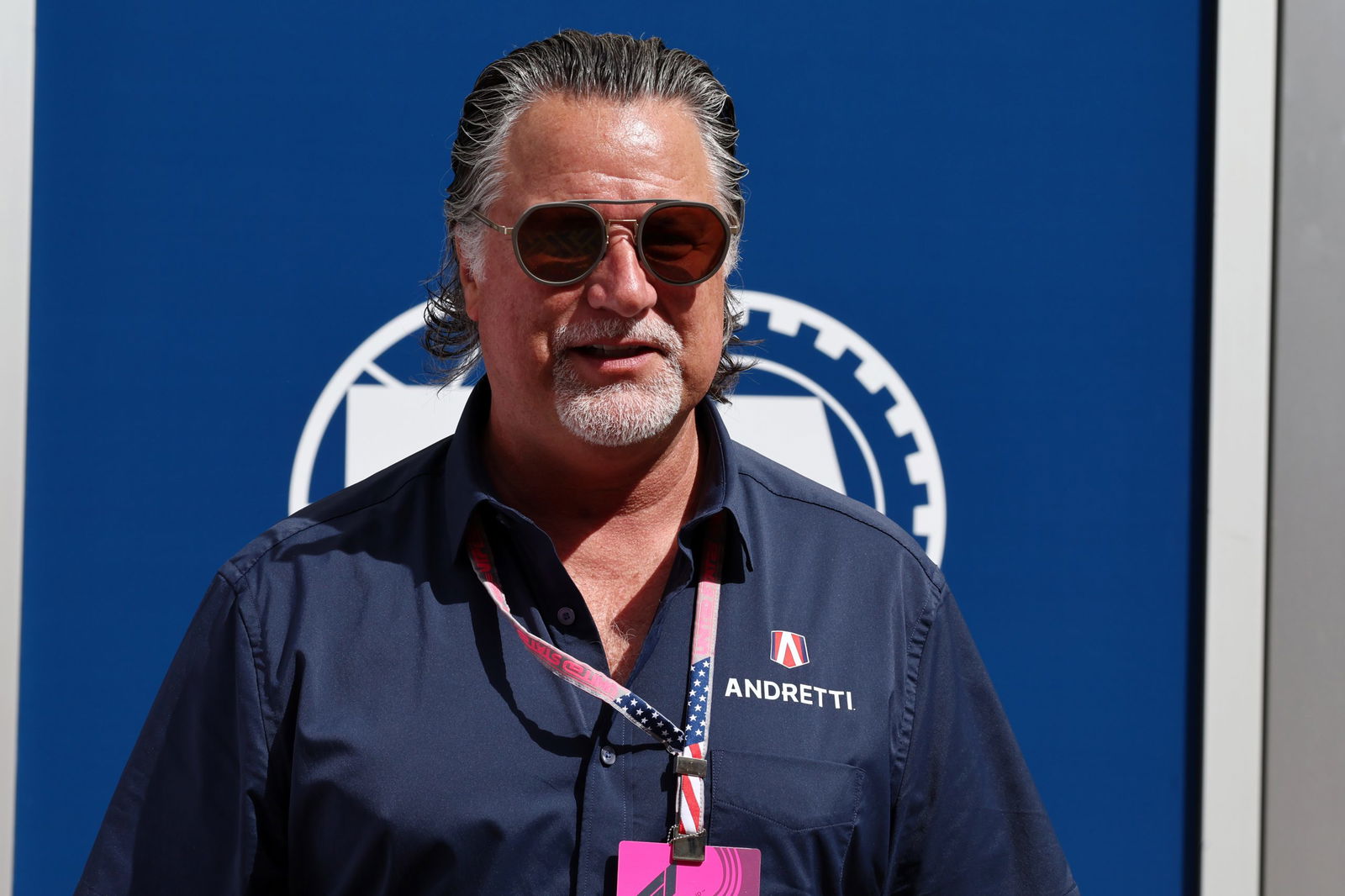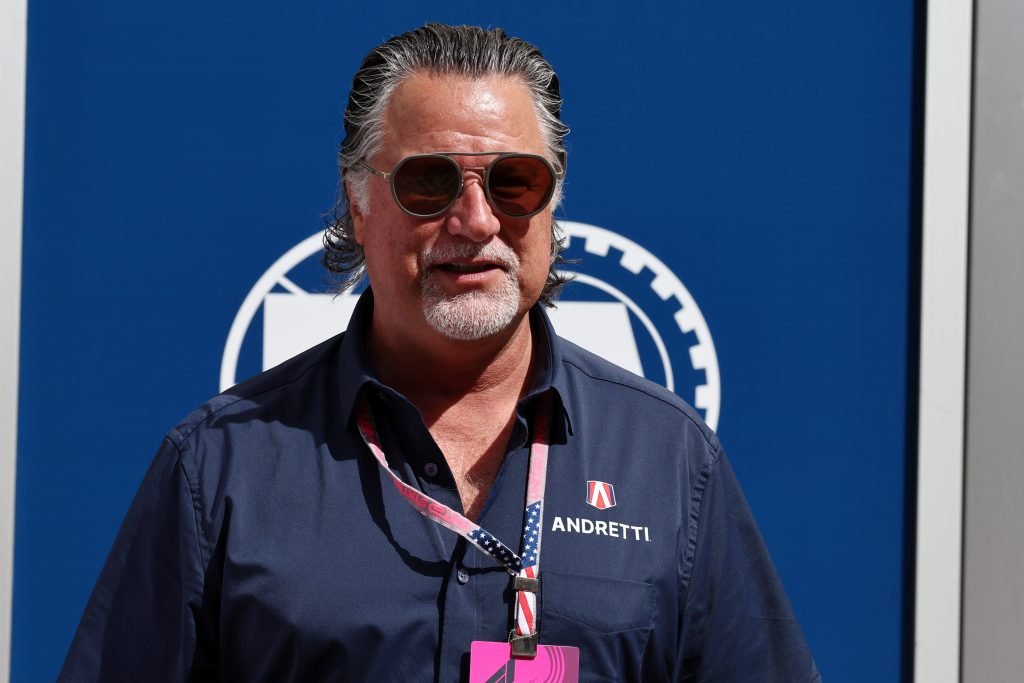

The decision by F1 comes at the end of an arduous year-long journey from when the FIA opened its ‘Expressions of Interest’ process on February 2 last year.
Nine months later, Andretti Global Racing initially succeeded in passing the FIA’s rigorous procedures to prove it was a credible entry in terms of its sporting and technical ability.
It was then a decision for the commercial rights holder to prove whether the United States-based team was financially viable, an exercise that has taken three months to complete.
Over the past 12 months, Andretti has faced considerable opposition from F1’s current teams, bemoaning the fact the introduction of an 11th team would significantly reduce their share of the sport’s prize pot.
F1 CEO Stefano Domenicali also often voiced his objection to an 11th team.
F1 has concluded that at present Andretti “would not add value to the championship”.
That is despite the fact its bid is supported by General Motors and its Cadillac brand. An agreement is in place for GM to create a power unit for the new 2026 regulations, although it would not be ready until 2028.
A statement from F1 says that as part of its own review process it “took account of the broad range of ways in which value could be provided, including value to fans, the prestige and reputational value of the sport, the competitive balance of the championship and the sustainability goals of the sport”.
There were seven key areas of review, namely:
i) consideration of the likely competitiveness of the applicant’s entry, and its impact on value.
ii) consideration of the applicant’s arrangements with respect to the supply of power units and the impact that those arrangements would have on the applicant’s competitive performance.
iii) research into the potential benefits the applicant might bring in terms of fan growth, and fan engagement, as well as a review of the equivalent materials prepared by CIT Group on behalf of the applicant.
iv) consultation with key stakeholders to understand their view of the value that the applicant would bring.
v) consideration of the operational impact on our existing circuits of adding an 11th team.
vi) consideration of the likely impact of the applicant’s entry on the commercial rights holder’s financial results as an indicator of value.
vii) consideration of the applicant’s financial sustainability based on the materials provided.
F1 insists that its assessment “did not involve any consultation with the current F1 teams”, albeit adding that “in considering the best interests of the championship we took account of the impact of the entry of an 11th team on all commercial stakeholders in the championship”.
In general, F1 felt that its process established that the presence of an 11th team “would not, in and of itself, provide value to the championship”.
Its statement added: “Any 11th team should show that its participation and involvement would bring a benefit to the championship.
“The most significant way in which a new entrant would bring value is by being competitive, in particular by competing for podiums and race wins.
“This would materially increase fan engagement and would also increase the value of the championship in the eyes of key stakeholders and sources of revenue such as broadcasters and race promoters.
“The application contemplates an association with General Motors (GM) that does not initially include a PU supply, with an ambition for a full partnership with GM as a PU supplier in due course, but this will not be the case for some years.
“Having a GM PU supply attached to the application at the outset would have enhanced its credibility, though a novice constructor in partnership with a new entrant PU supplier would also have a significant challenge to overcome.
“Most of the attempts to establish a new constructor in the last several decades have not been successful.
“2025 will be the last year of the current regulatory cycle and 2026 will be the first year of the subsequent cycle, for which an entirely different car to the previous cycle will be required.
“The applicant proposes, as a novice constructor, to design and build a car under the 2025 regulations, and then in the very next year to design and build a completely different car under the 2026 regulations.
“Further, the applicant proposes to attempt this with a dependency on a compulsory supply from a rival PU manufacturer that will inevitably be reticent to extend its collaboration with the applicant beyond the minimum required while the applicant pursues its ambition of collaborating with GM as a PU supplier in the longer term, which a compulsory PU supplier would see as a risk to its intellectual property and know-how.
“We do not believe that there is a basis for any new applicant to be admitted in 2025 given that this would involve a novice entrant building two completely different cars in its first two years of existence.
“The fact that the applicant proposes to do so gives us reason to question their understanding of the scope of the challenge involved.
“While a 2026 entry would not face this specific issue it is nevertheless the case that Formula 1, as the pinnacle of world motorsport, represents a unique technical challenge to constructors of a nature that the applicant has not faced in any other formula or discipline in which it has previously competed, and it proposes to do so with a dependency on a compulsory PU supply in the initial years of its participation.
“On this basis, we do not believe that the Applicant would be a competitive participant.
“Coming to the sport as a new PU manufacturer is also a huge challenge, with which major automotive manufacturers have struggled in the past, and one which can take a manufacturer a number of years of significant investment in order to become competitive.
“GM have the resource and credibility to be more than capable of attempting this challenge, but success is not assured.”
In conclusion of the commercial assessment, it was felt that “the most significant way in which a new entrant would bring value (to the championship) is by being competitive. We do not believe that the applicant would be a competitive participant.
“The need for any new team to take a compulsory power unit supply, potentially over a period of several seasons, would be damaging to the prestige and standing of the championship.
“While the Andretti name carries some recognition for F1 fans, our research indicates that F1 would bring value to the Andretti brand rather than the other way around.
“The addition of an 11th team would place an operational burden on race promoters, would subject some of them to significant costs, and would reduce the technical, operational, and commercial spaces of the other competitors.
“We were not able to identify any material expected positive effect on CRH (commercial rights holder) financial results, as a key indicator of the pure commercial value of the championship.
“On the basis of the application as it stands, we do not believe that the applicant has shown that it would add value to the championship. We conclude that the applicant’s application to participate in the championship should not be successful.”
The bottom line for Andretti, however, is that providing it meets certain criteria, it could enter in 2028.
F1 concluded: “We would look differently on an application for the entry of a team into the 2028 championship with a GM power unit, either as a GM works team or as a GM customer team designing all allowable components in-house.
“In this case, there would be additional factors to consider in respect of the value that the applicant would bring to the Championship, in particular in respect of bringing a prestigious new OEM to the sport as a PU supplier.”






















Discussion about this post